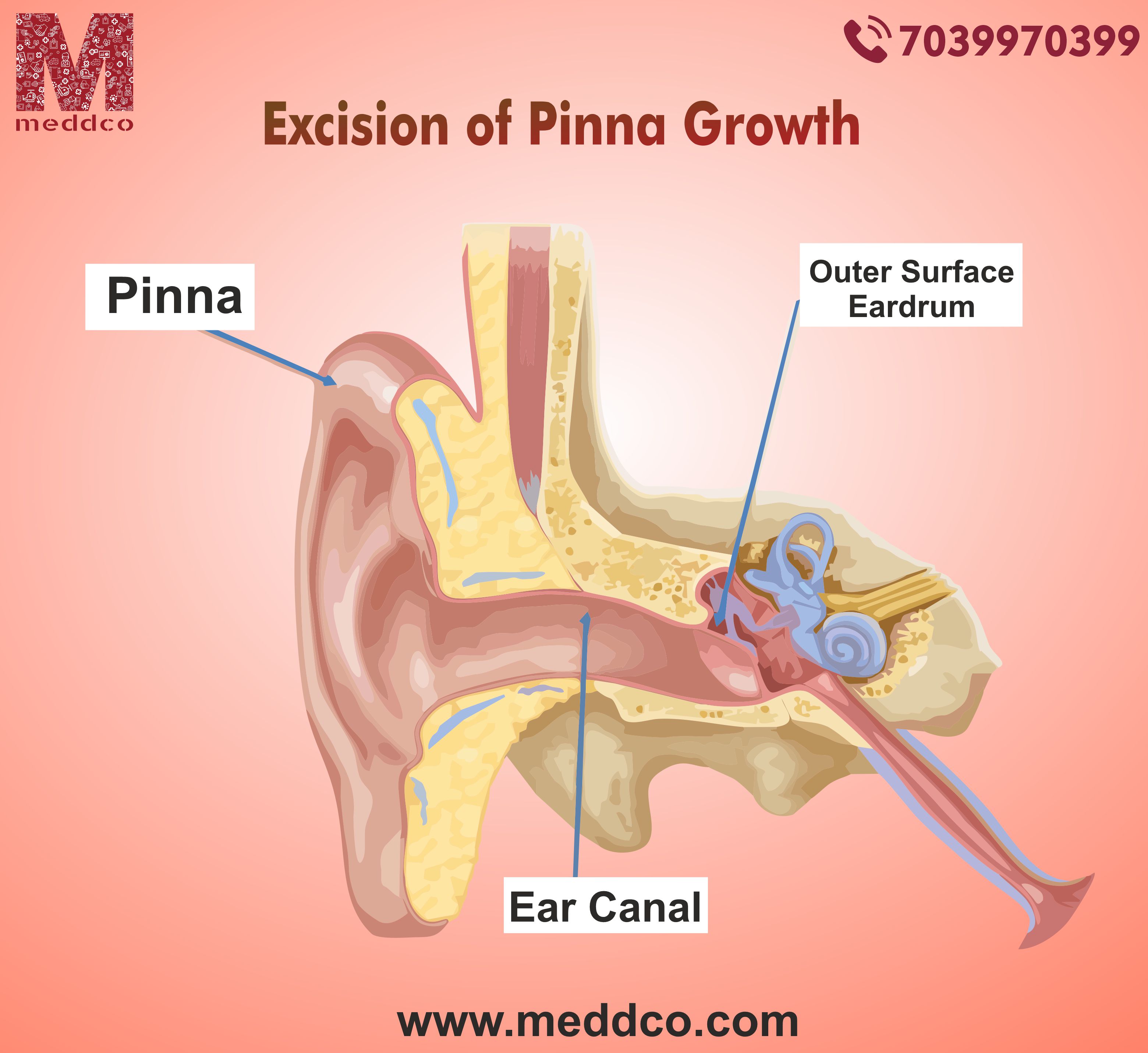

: Admin : 2022-04-08
What is a pinna growth?
An abnormal growth on the outer layer of the ear, which may look likea lump, swollen and may or may not be painful on touching or applying pressure, is an external pinna growth.
A Pinna growth may be excised by a surgical procedure called Otoplasty.
A Pinna growth may be excised by a surgical procedure called Otoplasty. Otoplasty denotes surgical and non-surgical procedures that correct deformities or can alter the dimensions and proportions of the ear such as shape, size, position, abnormalities etc..jpg)
An octoplasty is usually done for your auricle. When the auricle doesn’t develop properly, you may choose to have otoplasty to correct the size, positioning, or shape of your ears. It is also majorly done to remove growths on the pinna. This cosmetic procedure has several different types like:-
Like every surgical procedure, otoplasty has several risks like:-
The ears need to be fully developed for an otoplasty, which is mostly after the age of 5. The surgeon will go through any previous medical records. The surgeon will do a physical check-up of the patient’s ears and will discuss what thepatient wants to do with the ears down to inches. He will make sure that the patient is strong enough to make a full recovery after the procedure and has support. He might also run a few tests to optimize the information in the best way for the surgery. Once the patient passes all the tests he will be instructed to not eat anything the night before surgery. This is done to ensure no complications (like throwing up) occur after administration of anesthesia. The surgery will usually last 1-3 hours unless there are any complications and depending on the type of procedure the patient has opted for. The patient may be discharged on the same day or the coming day, depending on his health and recovery. Don’t be afraid to ask questions if something is unclear or you feel like you need more information. It’s also recommended to ask questions about your surgeon’s qualifications and years of experience.

The specific surgical technique that’s used will depend on the type of otoplasty you’re having. Generally speaking, otoplasty involves:
After the surgery, the patient will wake up with a dressing on the ears. It is important to change the dressing regularly, as per your surgeon's instructions. The surgeon will give you specific instructions on how to care for your surgical site and stitches. You may need to come back over time to remove them in case they are not dissolvable. Sore, itchy and tender ears are normal during the recovery period. There may be a little bruising, swelling and numbness which will reduce over time.
It is extremely important to avoid scratching or constant touching to the years. It is advised to find a comfortable sleeping position that does not put any pressure on the years and clothes that are not worn over the head are also advised.
Your dressing will stay in place for about a week. After it’s removed, you’ll need to wear an elastic headband for about 4-6 weeks. You can wear this headband at night. Your doctor will let you know when you can return to various activities.
excision sxcision of pinna growth ear removal surgery
No Comments